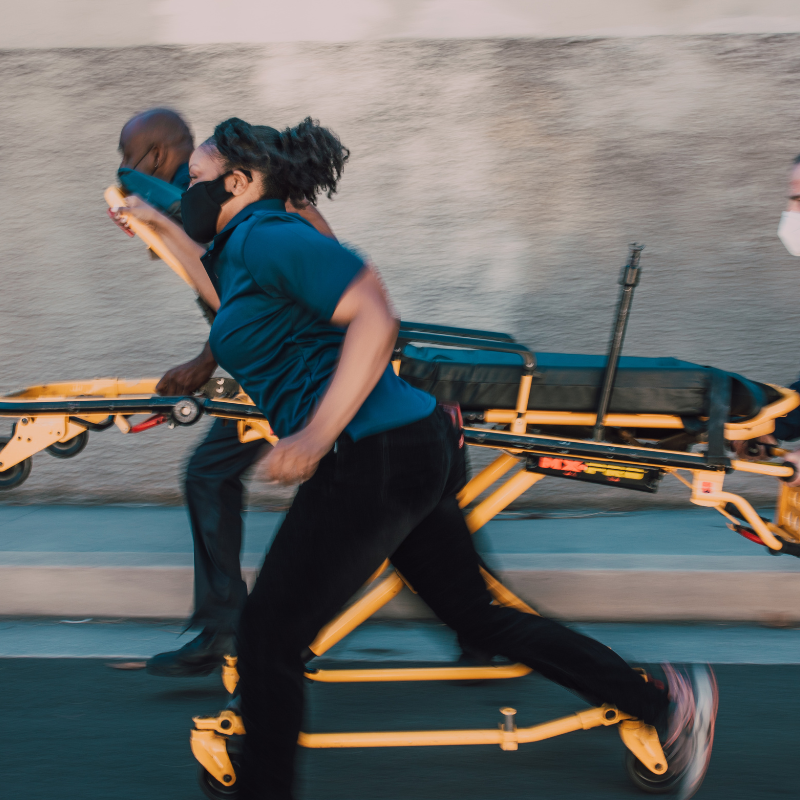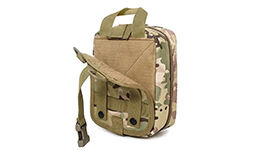The Vital Role of Stretchers in Emergency Medical Care
Introduction
In emergency medical scenarios, the safe and efficient transport of patients who are injured or unable to move independently is paramount. Stretchers, as a specialized medical device, play a critical role in this process. They are designed to provide stable support during transfer, particularly in trauma or urgent situations. This article aims to explore the various types of stretchers, their importance in trauma care, and their applications in different environments, including hospitals, emergency medical services (EMS), and military settings.
---
Understanding Stretchers: Design and Functionality
Stretchers are indispensable tools in the medical field, designed specifically to transport patients safely. Their primary function is to stabilize and protect individuals suffering from injuries or illnesses, minimizing movement to prevent exacerbating their conditions.
1. Types of Stretchers
Stretchers come in several types, each tailored to specific needs and environments:
- Rigid Stretchers: These are inflexible and provide significant support, making them suitable for transferring patients with suspected spinal injuries. Rigid stretchers help maintain the spinal alignment and reduce the risk of further injury during transport.
- Folding Stretchers: These portable devices are advantageous for emergency responders who need to navigate tight spaces. Folding stretchers can be easily collapsed for transport and are often used in rescue missions or situations with limited space.
- Adjustable Stretchers: These versatile stretchers can be modified in height and angle, allowing for better patient positioning. They are particularly useful in hospitals, where adjustments may be necessary depending on the patient's condition and medical requirements.
-
Basket Stretchers: These are designed for rugged environments, such as in rescue operations on mountains or in disaster-stricken areas. They can be secured to a rope for lowering or raising patients, making them essential in challenging terrain.

2. Critical Role in Trauma Care
In trauma care situations, the role of stretchers becomes even more pronounced. They are vital for moving patients who have:
- Bone Fractures: When a patient has a fracture, any unnecessary movement can lead to increased pain or worse, further damage. Using a stretcher ensures that the patient is stabilized and transported in a manner that limits mobility at the injury site.
- Spinal Injuries: Patients with potential spinal injuries require special care. Rigid stretchers are particularly important because they help to immobilize the spine and prevent movement that could worsen the injury.
- Other Fixed Conditions: Patients who are unconscious or in shock may not be able to assist in their transport. Stretchers provide a safe means of moving these individuals without risking their health.
3. Advantages of Using Stretchers
Using stretchers for patient transport offers numerous advantages:
- Stability and Support: Stretchers provide a stable platform that supports the body's weight evenly, reducing pressure points and ensuring comfort, which is especially important during long transports.
- Minimized Movement: During a patient's transfer, minimizing movement can prevent further injuries and manage pain levels effectively. Stretchers are designed to restrict excessive movement while offering the necessary support.
- Efficiency in Emergency Situations: In urgent scenarios, having a reliable stretcher allows medical personnel to act swiftly. The efficiency of stretchers means that delays in patient care can be minimized, potentially saving lives.
- Versatile Applications: From urban emergency services to remote medical scenarios, stretchers can adapt to various situations, whether being used in an ambulance, helicopter, or emergency rescue operation.
---
Applications of Stretchers in Various Environments
1. Hospitals
In hospital settings, stretchers are omnipresent. They transport patients from their rooms to operating theaters, facilitate movement during examinations, and aid in emergency responses. Adjustable stretchers are particularly common, as they can cater to patients' specific medical needs.
2. Emergency Medical Services (EMS)
For EMS teams, stretchers are critical to providing on-scene care. Quick and safe patient transfer is essential, especially in densely populated urban areas where every second counts. EMS professionals rely on folding and rigid stretchers to navigate through narrow spaces while ensuring the patient's safety.
3. Military Operations
In military contexts, stretchers are indispensable for evacuating injured personnel from the battlefield. Basket stretchers, for example, are used by medics to extract wounded from hard-to-reach locations. The ability to secure a stretcher for transport by helicopter or ground vehicle ensures that injured soldiers are given prompt medical attention.
4. Wilderness and Disaster Response
In remote or disaster situations, where patients may be trapped or in hard-to-reach locations, stretchers allow rescue teams to bring them to safety efficiently. The use of robust, weather-resistant stretchers designed for outdoor conditions is crucial. These stretchers can endure rough terrain and support patients for extended periods during complex rescue operations.
---

Implementing Best Practices for the Use of Stretchers
To maximize the effectiveness of stretchers in patient transport, healthcare professionals and emergency responders should adhere to specific best practices:
1. Training and Familiarization: It is essential that all staff members are trained in the correct methods for using stretchers, including how to secure a patient properly and navigate various environments.
2. Regular Maintenance: Stretchers must be regularly inspected and maintained to ensure safety. Any signs of wear, such as frayed straps or weak frames, should be addressed immediately.
3. Patient Assessment: Before transferring a patient onto a stretcher, thorough assessment and preparation are crucial to minimize discomfort and complications during the move.
4. Communication Among Team Members: Effective communication among the team members is vital during the transfer process to ensure coordination and reduce the risk of accidents.
5. Utilizing Appropriate Equipment: Selecting the right type of stretcher for the specific situation can significantly impact the effectiveness of the patient transfer. Emergency responders should be familiar with various types of stretchers and their appropriate applications.
---
Conclusion
Stretchers are an essential component of medical transport, playing a crucial role in ensuring that patients who are injured or unable to move independently receive safe and effective care. From hospitals to military and emergency services, the diverse range of stretchers available allows healthcare providers to meet various needs and underscored their importance in patient care. By continually improving their use through training and adherence to best practices, the healthcare industry can enhance the quality of care while safeguarding patient safety during transfers. In an ever-changing environment, the stretcher remains a steadfast tool in the medical toolkit, ensuring that those in need receive the assistance they require when every second matters.
Hot News
-
Top Medical Equipment Suppliers: Comprehensive Analysis
2024-01-15
-
What is IFAK?
2024-01-15
-
First Aid Kit Essentials and Tips
2024-01-15
 EN
EN
 FR
FR
 DE
DE
 IT
IT
 JA
JA
 KO
KO
 RU
RU
 ES
ES
 AR
AR
 BG
BG
 HR
HR
 DA
DA
 NL
NL
 FI
FI
 EL
EL
 NO
NO
 PL
PL
 PT
PT
 RO
RO
 SV
SV
 TL
TL
 ID
ID
 SR
SR
 UK
UK
 VI
VI
 SQ
SQ
 TH
TH
 TR
TR
 AF
AF
 MS
MS
 CY
CY
 IS
IS
 HY
HY
 AZ
AZ
 KA
KA
 MN
MN
 MY
MY
 KK
KK
 UZ
UZ
 CS
CS



